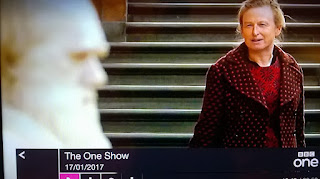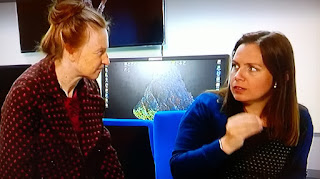Stonehenge: the site that keeps on giving. This month it's a debate surrounding the building (sometime in the future) of a road tunnel in order to remove the A303 which appears to have captured the attention of both public and the media.
Whilst most people, with perhaps the obvious exception of Jeremy Clarkson, believe that the A303 is too busy, too full of cars and far, far to close to one of the world's most iconic ancient monuments, there is no real consensus as to how the problem can be resolved. A tunnel, to bury the road, has been proposed but no one can currently agree as to whether this is a good thing or, if it is, where the tunnel should go in order to avoid damage to areas of human habitation, archaeological sites or areas of environmental concern (of which there are many).
Simon Jenkins, however, writing in the pro-Conservative party paper the Spectator, has noted that in his opinion, the proposed tunnel is "a monumental folly".
Jenkins writes: “Stonehenge is not like France’s Lascaux
Caves, so fragile they have had to be closed in favour of a facsimile” a point of view which is, I feel I must point out, wrong on so many levels, bearing in mind that it is precisely the fragility of both stones and their setting that currently precludes the public from getting close to (or rubbing up against) the monument. "What
you see is what you get", Jenkins writes, "robust stones requiring little upkeep”. Wow. Remind me again; this is the same Simon Jenkins who was once deputy chairman of English Heritage and chairman of the National Trust isn't it? One would hope that he knew something (anything) about the upkeep of ancient monuments and the pressures of visitor access, pollution, ground disturbance etc.
What I find really troubling, however, is Jenkins' apparent rage against the great outdoors, noting that the thrill of Stonehenge ”is as much the view from afar as from close
to, and is enjoyed by millions who drive past on their way to the West Country.
It is the thrill of a glimpse, a passing reminder of the longevity of human
habitation in this land."
Now, stop me if I misunderstand this, but what he appears to be saying is that Salisbury Plain is best appreciated, not by standing in the middle of it, breathing deeply, feeling the earth beneath your feet, listening to birdsong and moving along paths created centuries before, but by sitting behind the wheel of a car in a long traffic queue, breathing in exhaust fumes and shouting abuse at the white van driver in front who just inexplicably cut you up without indicating.
Mmmmm. I can picture it now. Lovely.
Whilst I would be the first to admit that the sudden glimpse of the sarsen trilithons of Stonehenge is indeed an uplifting one, it is, I think, far more effective when seen, as it was designed to be, on foot. Only then can you truly appreciate the beauty, scale, achievement and sheer monumentality of the construct.
Stonehenge, like all architectural efforts of the British Neolithic and Early Bronze Age, was designed to be seen, not from afar, but by surprise and close up. If you want to understand the monument, you have to approach it along the Avenue, walking along the ancient ceremonial path that snakes out of sight along the dry valleys to the northeast of the stones. Here, moving uphill with no clear idea of where you are ultimately heading, the stones suddenly emerge, as if by magic: intimidating, awe-inspiring and really quite wonderful.
Now that the disfiguring tarmac scar of the A344, which for decades separated the stones from the Avenue, has been removed, this prehistoric approach is now possible in its entirety.
Mr Jenkins, however, seems wholly unaware of this, raging that “Stonehenge presents a direct conflict
between the ‘bought rights’ of visitors to the stones, and the freedom of
members of the wider public to see them from afar" adding that "a tunnel would kill the motorist’s
pleasure stone dead”.
Aside from the rather gob-smacking ignorance of this particular comment (noting, as we just have, how the stones were meant to be approached along the Avenue, retaining the key element of surprise, and not merely to gawp at them from 'afar') I would like to point out that the main purpose of driving on the A303 is to get to point B from point A as easily (and ideally as quickly) as possible. Having a world heritage site 'pop up' in plain view as you attempt to do this is not only distracting but really quite dangerous, contributing to the traffic jam as countless drivers slow down to 'rubber neck' the stones (as they would a collision on the other side of the carriageway).
Perhaps, if you want a distracting, awe-inspiring view on your car journey, Mr Jenkins, you could stash a set of postcards in the glove compartment of your 4x4 and, at discrete moments in the drive you could arrange for a passenger to remove them, one at a time, and pass them before your eyes: "oh look, Stonehenge"; "oh look, the Acropolis"; "oh look, the Taj Mahal"; "oh look, the pyramids of Giza" etc etc.
My, how the journey would simply fly by.
Alternatively, of course, you could park your car and get out. Visiting the Stonehenge visitor centre, you could then start to unwind from your, no doubt rather stressful, journey and eat some cake in the cafe.
You could also walk around the excellent displays, take in the reconstruction Neolithic houses and perhaps stroll (or even get the land-train if you want to travel by a petrol-fueled vehicle a little bit more) right up to the stones where, if you divert to the Avenue, you could approach the monument (across National Trust land) and see the site in the way that it was originally intended.
You'll find that it's quite an amazing experience.
















